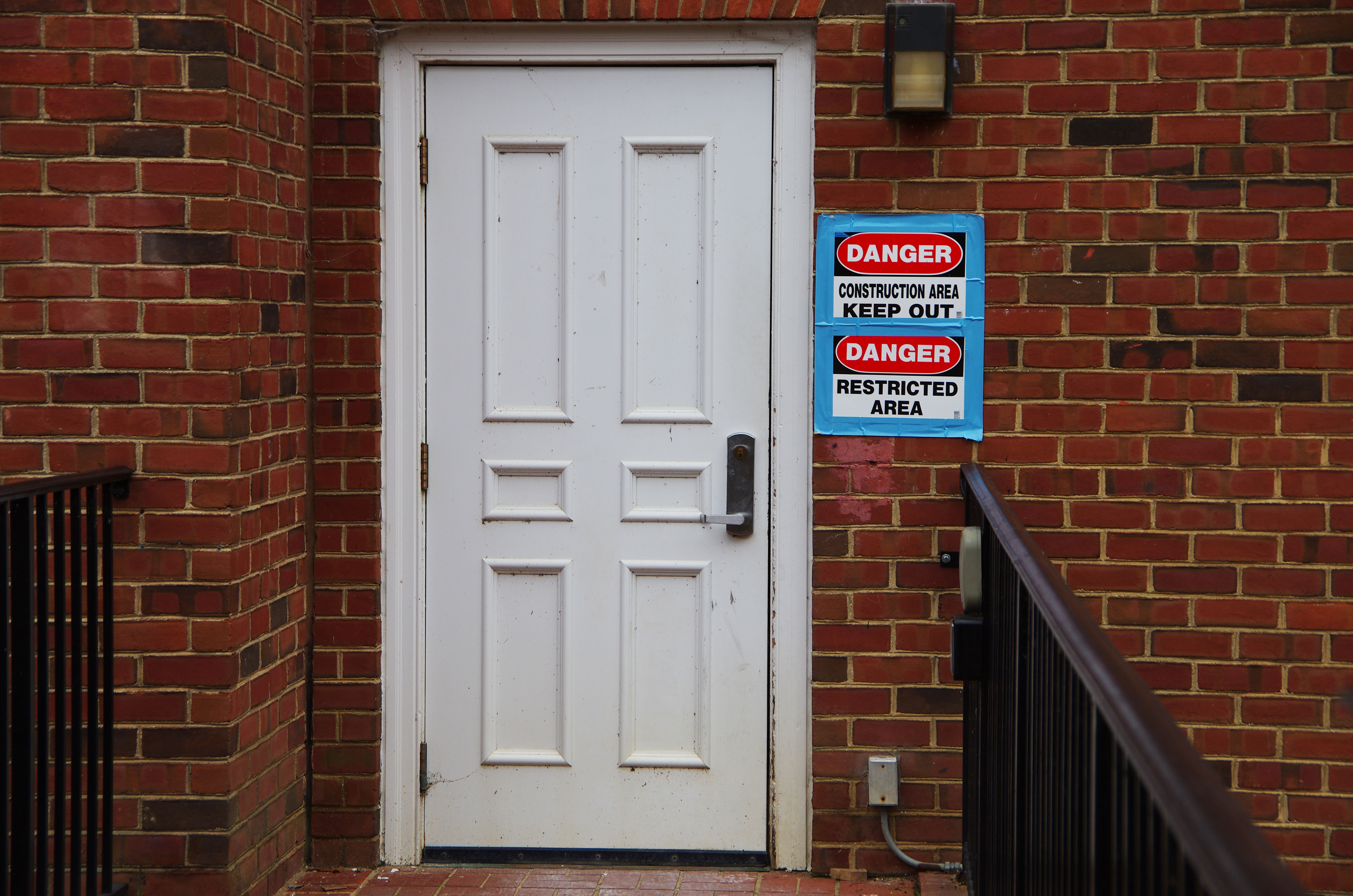Arrington Hall renovations displace students
4 min read
Noah Strobel
By RHYS JOHNSON
Staff Writer
A pipe burst in Willard, then the mold appeared in Alvey, and finally, a plumbing issue flooded Arrington. In a two-year span, the housing availability for upperclassmen at UMW has diminished due to a series of unfortunate events. The most recent, the flooding of Arrington, left the Office of Residence Life scrambling to find housing for 127 students.
To solve this housing shortage, the university adopted a two-step plan. The majority of students were assigned to live with Resident Assistants on campus. Then the remaining 41 students were assigned to live in two off-campus apartment complexes, Cobblestone and The Seasons, with the intent of returning students to Arrington in time for the spring semester.
On July 16, students received an email from the Office of Residence Life and Housing. It revealed that, during a scheduled inspection of Arrington by UMW’s Facilities Department, areas of mold were found. After further assessment, they determined they would be unable to address the mold over the remainder of the building’s planned summer maintenance.
Arrington suffered severe flooding from a plumbing issue on an upper floor, which lasted an entire weekend. It was only discovered when the workers returned on Monday.
Following the flooding incident, the damage was determined to be significant enough to warrant shut down Arrington for the fall semester. The repair is anticipated to be complete by the start of the spring semester.
The Office of Residence Life and Housing took a number of precautions to help with the displaced students’ transition to off-campus living.
“The apartment complexes to which students are assigned will be staffed by on-site RAs and campus safety officers,” said a July 24 email from the Office of Student Affairs. “These students will also receive help with move-in and transportation to and from campus.”
Vice President for Student Affairs Dr. Juliette Landphair said the Residence Life staff considered a number of factors when relocating students off campus.
“In identifying students to be placed in off-campus housing, the staff considered class year and academic success, choosing first seniors and juniors who had more time to develop strong academic and social skills,” said Landphair. “In addition, they worked to keep roommate groups together, when possible.”
Landphair said the university is working to get students back on campus as soon as possible.
“We believe strongly in the positive outcomes of living on campus, as retention rates and GPA data support,” said Landphair.
Junior psychology major and Cobblestone resident, Alexis Erb, thinks UMW might have another reason for being anxious to have Arrington ready for student move-in by spring semester.
“Another reason why UMW is probably so adamant about getting us back on campus is because we are paying the same rate we would have if we were to be living in Arrington this semester,” said Erb. “Therefore the university is picking up the rest of the tab, and if Arrington isn’t done by the time spring rolls around it’s more money the university is spending, which of course nobody wants to spend more money if they don’t have to.”
Erb also said that although she appreciates that transportation is provided to and from campus and that her roommate group was kept together, living in Cobblestone can be stressful at times.
“We have to make sure we leave with enough time to get onto campus, park if we own a car and get to class on time,” said Erb. “For those of us that drive we are spending much more money on gas than we would have anticipated if we were to be living on campus this year so there is a slight stress on money.”
Landphair said she felt students had been “remarkably understanding.”
This was the case for Jeanette Hiyama, a sophomore living in the Cobblestone apartments. “It’s definitely frustrating, but they did put us in a nice place,” said Hiyama. “Taking the shuttle back and forth isn’t bad but it takes extra time,” Hiyama noted that the shuttle to and from UMW arrives every half hour and is usually on time.
Junior environmental science major Mary Hoffman had mixed feelings about being relocated off campus.
“The new accommodations are really not walkable in any feasible sense. For someone with a decent walking pace, it would take maybe 30 minutes to make it to the south end of campus. At night or in bad weather, walking is undesirable and even unsafe,” said Hoffman.
However, she praised the university for its handling of the situation.
“Refusing to increase our price of living, the college has absorbed additional costs accrued by moving some residents to Cobblestone and Seasons… despite the unfortunate events that took place, the college has done much to ensure that the displaced students could easily and comfortably transition back into a new school year,” said Hoffman.
Juliette Landphair was skeptical that additional preventative maintenance could have curbed the flooding and mold issues in Alvey and Arrington.
“Alvey and Arrington Halls’ systems and materials reflect the building codes and standards of their design dates. Codes today are changed to reflect the lessons of experience in more effective systems to control moisture in building HVAC systems,” said Landphair.
Landphair assured students that the staff is working diligently to accommodate students.
“In reaction to the information coming forward about these two halls, staff members across the University (Residence Life and Housing, Facilities, Emergency Management, Police, University Relations, and others) immediately came together and met several times throughout the summer; as a participant in most of those conversations, I can say without equivocation that student welfare was always at the center of our discussions,” said Landphair.


